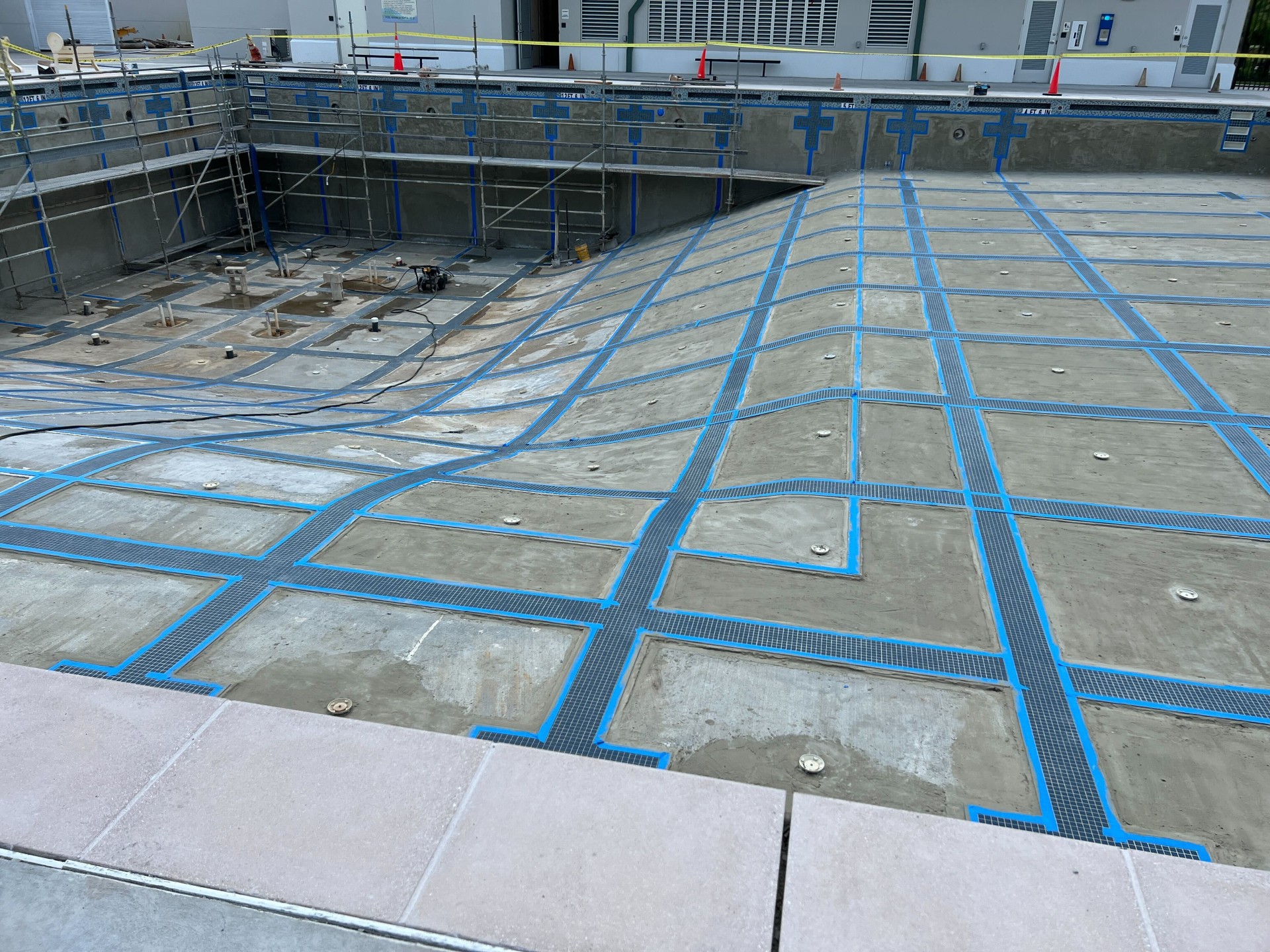Developing and starting an aquatics facility of any size — whether a small swim school or expansive municipal waterpark — can be daunting, especially for those new to the process. There may be steps and details you don’t foresee, and delays that are difficult to understand.
To help, these experts provide a step-by-step road map of this process. Steps are listed in approximate order, but keep in mind that the sequence can change with each job, depending on such things as scale and the process used by the municipality or other entity.
STEP 1: Feasibility Study
What it is: To find out if your idea is viable, and whether it needs some adjustments, many conduct a feasibility study.
These help determine a number of things — what the market can accommodate, whether there’s a need for the center, what kinds of features and programs would draw attendance. They can yield the design, footprint and layout of the building, and what it will cost to build, operate and staff, and how much revenue it would need to generate.
Some smaller projects don’t need a full-scale feasibility report. Some consultants can perform a smaller-scale study for simpler centers, such as swim schools. Other times, you may have enough data and knowledge to provide enough information to potential lenders, investors and donors.
What to expect: For larger-scale aquatics facilities, especially on the municipal side, plan to hold public hearings to gain input from the community about what members want, how they like the plan so far and whether they’d use the facilities.
Regardless of the facility’s projected size, expect to make adjustments after this phase. You could find that the project isn’t viable. But, more likely, you’ll see a need to slightly alter your plans and expectations.
“If you thought that your community needed a pool but the feasibility study brought information to light that there are hardly any aquatics facilities within multiple counties, that might change your approach,” says Jen Gerber, vice president of strategic partnerships and operations for Water Technology Inc. in Beaver Dam, Wisc. “You might look at your center as more of a regional facility. Or the findings might tell us that we need to … go a little smaller.”
This also may be the time when a preliminary design is put together to guide choice of the site and present to potential lenders and investors.
What to watch for: For a feasibility study to carry any credibility with potential donors and investors, it must be conducted by an independent third party that has no interest in whether the project moves forward or what form it takes.
“We’ll provide design information as part of a feasibility study team,” Gerber explains. “We never provide pro forma or market data … We should not be telling you how much we can design, because there’s a natural conflict of interest there.”
Timeframe: Six to 12 months for larger projects; two to four months for smaller projects seeking lighter study.
STEP 2: Land Identification
What it is: This is the part where you find your site. It can be brand-new construction on a clean site, known as a greenfield space, or you could choose to move onto a plot that has already been developed, whether as an aquatics space or other purpose. It could be to buy or lease. This step ends with the acquisition of health and building permits and, in some municipalities, water-management reviews and other utility reviews.
What to expect: Plan for geotechnical engineers to assess the soil, and its ability to support a collection of buildings and water-filled vessels.
The space may need some repairs. “Most sites that are being used for pools are not in the best shape for this kind of development,” says Jonathan “JT” Toavs, studio director for Orlando-based Martin Aquatic Design & Engineering. “So there’s some kind of remediation that probably needs to happen.”
Don’t assume that a leased space will move more quickly than greenfield. In some cases it will, but others will require a number of alterations and additions to accommodate the water elements and create the layout you need.
“If you’re going to lease a space and put a pool in it, you’re going to have a lot of things [to consider],” says Mick Nelson, co-owner of Total Aquatic Programming in Colorado Springs, Colo. “The building inspectors will say, ‘What do you have to do to the interior of the building to protect it from the environment?’ So you still have a lot of [factors] almost like a new build.”
During this phase — and perhaps the whole project — permitting is considered the wildcard. Time-wise it is one of the biggest variables, depending on the process and rules adopted by the local health and building departments. Each is different: Some take longer than others; some require an in-person visit while others will only work remotely; and some have stricter requirements.
“There are a number of states that most designers have on their red-flag watch list, because we know it is going to be significantly harder when comments come back from the Health Department,” Gerber says. “Some states even have additional qualifications to be able to work with the health department.”
This part could take a few weeks or several months. It can be frustrating, but these experts recommend using this time to begin planning such things as programming, staffing and marketing.
What to watch for: Be sure to avoid the most common mistake when it comes to choosing your site: underestimating the amount of space you’ll need. Remember that building does not and cannot take place up to the plot’s borders, as each locality imposes its own setback requirements and utilities have easements, both of which dictate where building must stop. Additionally, you’ll need to account for support spaces that may not come immediately to mind, such as parking lots, roads, utilities access, mechanical rooms and locker rooms for both visitors and staff.
Make sure your commercial real-estate developer or other professional helping you locate a space knows the codes and ordinances, as well as the requirements and duration for permitting.
Timeframe: Several months, with at least three for permitting.
STEP 3: Find/Finalize Funding Source
What it is: This determines how you will finance the project, whether it be through loans, investors, donors, incentives — or some combination.
What to expect: You’ll likely need to be ready with some cash of your own. Generally speaking, banks will only fund up to 70%.
“Then if they say, ‘We can only do 50% of this,’ then you can go to the Small Business Administration and do a little higher-interest rate loan for the balance,” Nelson says.
The average swim school will cost between $3.5 million and $5.5 million to develop — not including the property. “Add the land on top of it, so now we’re up to $6 million, so you need to have $1.8 million somewhere to even think about this project,” Nelson says. “Nobody’s going to finance the whole thing. You have to have skin in the game.”
What to watch for: See if the city or county offers incentives for businesses that benefit the community. “When you’re talking about aquatics and helping children … there usually is an appeal to that,” Lauenstein says. “It’s a positive thing you’re bringing, so you might get some support, or even some financing incentives.”
Additionally, if your center is designed to attract people from around the region, the city may offer incentives to encourage tourism.
Such inducements could apply to land identification as well, if the city has a property it can sell for less than market value.
Provide potential lenders, investors and donors with information such as a preliminary design, expected demand and revenue, cost per square foot to operate, staffing plans and other data points to help reviewers evaluate your ability to pay back a loan.
“It’s an art form to give them enough information that they’ll read, but not too much information so they’ll either skip it or try to micromanage it,” he says. “So the presentation of that is extremely important.”
Timeframe: Easily three to four months, perhaps eight weeks for a bank loan on smaller properties.
STEP 4: Full Design
What it is: Preliminary design work likely started early in the process. But now, with the site and budget secured, the team will work toward the final design.
What to expect: The design is a whole process unto itself, beginning with the formation of the team, going through the concept phase, site plan or layout and the schematic phase, when technical drawings are made.
Designers will work with you to finalize what features will satisfy your goals while fitting within the budget. They also will consider staffing and how their design will affect it. How many lifeguards will it take to watch that meandering lazy river? Maybe it needs fewer bends to reduce that number. Can front-office staff properly monitor the spaces around them?
Plenty of back-and-forth will take place between the designers and owners, and perhaps between owners and other interested parties, such as community members. This is especially true of municipal facilities. “There’s a lot of democracy in the design, engineering and construction of a public project,” Gerber says.
What to watch for: You likely will need several players on your design team, particularly for large and indoor projects. Seek the help of an aquatics consultant, especially for larger facilities, as this aspect of the project requires specialized knowledge.
Here, again, the soils engineer will play a key role. “That sometimes comes as a surprise,” Toaves says. “But when we’re designing a pool that’s going to go in the ground, where we’re putting that pool in makes a big difference. If it’s going in in an area that has really high groundwater, for instance, you have to be concerned with hydrostatic uplift and what happens with the groundwater when it gets really high.”
Other experts include architects and landscape architects; a mechanical, electrical and plumbing consultant (shortened to MEP); civil engineers and soils engineers. Forming your design team can take from a month to three months, says JT.
Timeframe: About six months for outdoor projects, eight to 14 months for indoor projects.
STEP 5: The Bid
What it is: Here, you’re finding the contractors to put in the various structures and features associated with the aquatics center.
What to expect: It has become popular to hire turn-key companies to handle the wet portion of the project, from design through construction. You can also hire a contractor and perhaps a project coordinator or project lead.
Of course, this needs to be budgeted. “Every time you get help, you can figure it’s going to cost you probably an extra 5% to 7%,” Nelson says.
What to watch for: If you want to start bidding before the design is complete to get a general idea of the cost, ask contractors if they will provide an approximate bid, Lauenstein advises. Some will not provide estimates and require a complete design.
Once the contractors are chosen, it will probably take another two months to break ground, as these companies finish serving the projects that came before yours. During this time, they also produce the technical drawings and other materials to provide crews and subcontractors once they get onsite, adds Toavs.
Timeframe: Four to eight weeks.
STEP 6: Construction
What it is: Here, contractors build the facility, including the pools and other wet features, as well as buildings, decking, parking lots and other dry elements.
What to expect: This phase can often take longer than expected, especially if trying to build around the pool season. Weather delays can add another three to five weeks to the timeline. Indoor facilities will probably take longer than outdoor.
“So there’s just a fair amount of considerations that are applicable in looking at how you plan for construction timelines,” Gerber says. “Some of it is just adjusting your expectations.”
What to watch for: The process will begin with the mobilization phase, during which time the team brings equipment and materials to the site in preparation for building. This can take three to four weeks, so don’t lose heart.
“People say, ‘I hired a contractor, and nothing’s happening,’” Nelson says. “Well, they have to get all their machinery from one job site to your job site. They have to get all their employees scheduled.”
Construction ends with the commissioning phase. Here, the project basically wraps up, with punch lists being evaluated, operational permits issued, major-equipment manufacturers inspecting the installations, pool start-up and maintenance and operations personnel trained on the equipment.
Timeframe: Smaller projects approximately four to nine months. Large projects usually 9-12 months, with others closer to 18-24 months.
STEP 7: Begin Hiring/Training
What it is: Choosing and training your staff needs to begin before the center opens, so that everyone is ready to go from Day One. “You want your staff to look like they’ve been in business for 10 years,” Nelson says.
What to expect: In order to generate revenue from the get-go, the staff will need to hit the ground running. Swim schools often have their lessons 70% booked before opening, in large due to promotions and incentives.
What to watch for: You will not be generating revenue at this time, so be sure to include your new staff’s pay for training time in your start-up capital.
Timeframe: Begin at least three months before the center is scheduled to open, earlier for larger facilities or if you believe staff shortages in the area will cause hiring delays.



